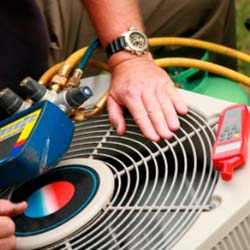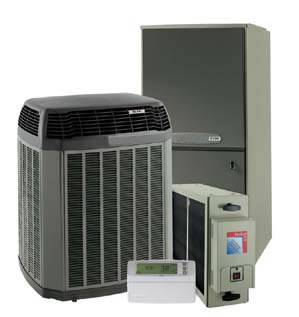Our Offered Services |
||
* Complete Heating and Air Conditioning System Installation and Repair * 24/7 Emergency Service Calls * Preventive Maintenance Service (See Article Below)  Preventive Maintenance= $avings PMAs are generally scheduled semi-annually to maintain peak efficiency, prevent utility overpayment, and avert system failures through predictive maintenance that can help extend the life of your HVAC system. Sometimes PMAs are also referred to as “planned maintenance agreements,” “start and checks,” or “preventative service agreements.” PMAs usually consist of fall and spring scheduled sessions for an ACCA-member service technician to go through your entire HVAC system preparing it for the upcoming season in a proactive approach before system failure and prior to overpaying your utility company. Energy Consumption The HVAC system is most likely the single biggest use of energy in your home. In commercial applications where refrigeration is applied (combined with the HVAC systems), huge amounts of energy are used in the building. In fact, over 1/3 rd of the energy used in the United States is used to heat and cool buildings. According to the Consortium of Energy Efficiency (CEE) up to 50% more energy can be saved with proper installation, sizing, and maintenance of commercial central air conditioning and heat pumps. “Although the CEE study did not measure residential systems, a compelling case can be made that proper maintenance can save homeowners up to 50% as well,” according to Larry Taylor, President of Air Rite A/C Company, Inc., Fort Worth, Texas. Out of Sight, NOT Out of Mind The old but true cliché “out of sight, out of mind” is often the reason for neglected maintenance guidelines for your HVAC system. HVAC systems are usually installed where they aren’t seen, such as in a section of the basement, a closet, on rooftops, or in mechanical rooms, making them easy to ignore. The systems are simply taken for granted, until they fail. Decreased efficiency, utility overpayment, discomfort, loss of productivity, eventual premature replacement, and higher repair costs are the result. Just because your HVAC system is out of sight, does not mean it can be neglected. Getting your HVAC system checked twice annually is just as important as changing the oil in your car every 3,000 miles! What should you expect your ACCA-member service technician to do during a PMA visit?
Spring Visit (preparation for summer season):
Fall Visit (preparation for winter season):
Note: For heat pump applications, winter season inspections repeat a number of the summer procedures plus several additional checks. Maintaining semi-annual PMAs for heatpumps is also important. What’s your bottom line?
|
  
How do you know if it‘s time to replace your old cooling and heating Equipment? - or improve the performance of your overall system? It may be time to call a professional contractor to help you make a change if:
> Your heat pump or air conditioner is more than 10 years old.
> Your furnace or boiler is more than 15 years old.
> Your equipment needs frequent repairs and your energy bills are going up. Your cooling and heating equipment may have become less efficient.
> Some of your rooms are too hot or cold. Improper equipment operation, duct problems or inadequate insulation could be the cause.
> No one is home for long periods of the day and you don’t have a programmable thermostat.
> Your home has humidity problems. Poor equipment operation, inadequate equipment, and leaky ductwork can cause the air to be too dry in the winter or too humid in the summer.
> Your home has excessive dust. Leaky ducts can pull particles and air in from attics, crawlspaces and basements and distribute them through the house. Having your ducts sealed may be a solution.
> Your cooling system is noisy. You could have an undersized duct system or a problem with the indoor coil of your cooling equipment.
If you said yes to 5 or more of these questions, you NEED to have someone assess the level of functioning of your current home heating and cooling system.
Find the Home Energy Yardstick at www.energystar.gov. |
|